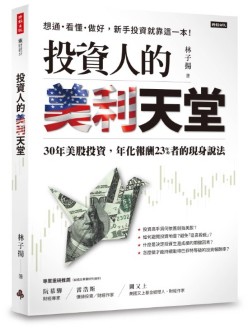Introduction to AWS
Amazon launched its Amazon Cloud Services (AWS) business in 2006. Although Amazon’s core business is e-commerce, investors who carefully read Amazon’s financial reports know that its e-commerce business contributes very little to the company’s profits, especially its non-North American e-commerce division, which continues to generate losses.
The Importance of AWS to Amazon
Main Contributor to Operating Profit
Amazon’s operating profit is primarily driven by AWS. In the second quarter of 2025, Amazon Cloud Services (AWS) accounted for over 50% of Amazon’s operating profit.
AWS has the largest global market share.
Not only that, AWS has consistently held the top spot in global cloud computing market share since 2006.
AWS is the Main Driver of Stock Price Growth
More importantly, Amazon’s stock price has been driven by the performance of AWS, not its e-commerce division. For nearly 20 years, AWS has been a key driver of its stock price, but pressure from companies like Microsoft, Alphabet, and Oracle is gradually weakening its stock price.
The situation has completely changed.
Q2 2025 Financial Report
Total revenue for the Q2 2025 report was $167.7 billion, a 13% year-over-year increase. Performance across the three major divisions is as follows:
- US e-commerce: $100.068 billion, an 11.1% year-over-year increase
- International e-commerce: $36.761 billion, a 16.2% year-over-year increase
- AWS: $30.873 billion, a 17.5% year-over-year increase
The day after the Q2 2025 financial report was released, Amazon’s stock price plummeted 8.27%, fully demonstrating investor disappointment with the Q2 2025 financial results:
- Q3 operating profit guidance below expectations
- Q2 revenue below expectations
- AWS growth rate far below Azure and GCP
AI erodes AWS’s lead
The widespread adoption of artificial intelligence has fueled explosive demand for hyperscale cloud computing services. Amazon Web Services (AWS) holds the largest market share, followed closely by Microsoft Azure and Alphabet’s GCP (Google Cloud Platform). Oracle’s significant growth in OCI suggests the emergence of a fourth major player, and CoreWeave is also attracting investors.
These companies are likely to remain industry leaders for years to come, but Amazon is beginning to show a weakness: investors haven’t seen the accelerated AI-driven growth in AWS’s backlog, as other companies have.
The numbers paint a grim picture
Amazon’s Q2 2025 earnings report showed significantly slower cloud revenue growth than Microsoft and Alphabet, and its operating income forecast also fell short of market expectations.
The Q2 2025 data provided the first warning sign: AWS has fallen behind Azure in the battle for AI workflow business, and the gap to Oracle and CoreWeave is even wider.
Capital Market Performance
Market Valuation: Price-to-Earnings Ratio
Prior to the second quarter of 2025, Amazon’s price-to-earnings ratio (P/E) was almost always around 70 during bull markets! Even during non-bull markets, its P/E ratio rarely fell below 50.
Amazon’s challenges are clearly reflected in its shrinking stock market valuation: Amazon’s expected P/E ratio for the next 12 months is approximately 25, while the Nasdaq 100’s P/E ratio is 27. Amazon’s discount relative to the highest of its tech peers is nearing this target.
In contrast, Oracle’s forward P/E ratio currently stands at 40, nearing its highest level since the dot-com bubble; Microsoft’s forward P/E ratio is nearly 32, above its 10-year average.
Alphabet’s stock trades at a forward P/E ratio of 22, slightly above the company’s long-term average. While this is lower than Amazon’s, the gap between the two has narrowed significantly.
Stock Performance
As of October 2, 2025, Amazon has been the worst performer of the seven major tech stocks so far in 2025, with a 0% increase, even worse than Apple’s 5%.
Since Oracle released its optimistic outlook after the market close on September 9, its stock price has risen approximately 20%. During the same period, Amazon’s stock price has fallen 7.4%, Microsoft’s has risen 4.3%, and Alphabet’s has risen 2.2%. Amazon’s stock price has lagged behind these competitors so far this year.
Market share
International Data Corporation (IDC) estimates that Amazon’s cloud business market share is expected to steadily decline, from nearly 35% in 2022 to less than 20% in 2030. This trend is driven in part by Microsoft, which is expected to surpass Amazon as the cloud market leader by 2029. At the same time, this also reflects Oracle’s rapid growth: by 2030, Oracle’s market share may rise to 12%, surpassing Alphabet; by 2022, Oracle’s market share will still be in the low single digits.

Related articles
- “When AWS is no longer impressive“
- "Amazon insider activity contributes 2025 stock price weakness“
- “Some AI software vendors are starting to make money“
- “Cloud computing No.1 should be Microsoft, not Amazon“
- “Microsoft, the dominant overlord of cloud computing“
- “Consider Alphabet if you can buy one stock only to retire from it? “
- “Oracle’s cloud computing and AI finally recognized“
- “Why Amazon acquired MGM?“
- “Amazon vs. Alibaba“
- “Amazon’s dominance by its economic scale, impact share price of PayPal, Affirm, Fair Isaac, Visa, and Mastercard“
- “How does Pinduoduo make money, why it surpass Alibaba and become No. valuable listed Chinese companies in US?“
- “How does Shein, the world’s fastest growing fast fashion seller, make money?“
Disclaimer
- The content of this site is the author’s personal opinions and is for reference only. I am not responsible for the correctness, opinions, and immediacy of the content and information of the article. Readers must make their own judgments.
- I shall not be liable for any damages or other legal liabilities for the direct or indirect losses caused by the readers’ direct or indirect reliance on and reference to the information on this site, or all the responsibilities arising therefrom, as a result of any investment behavior.
